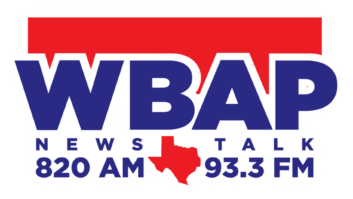The seventh column in this series is our first look at laptop computers and their use as a newsgathering tool.

Since computers have morphed into other devices, such as PDAs and the now omnipresent cell phone, we’ll also touch on how those devices can give reporters another method of transmission when others may have gone down or gone away.
Laptops usually are used to process audio that is rendered into an audio editing program from an external recorder (which is the process used when audio from a MiniDisc or other recorder is recorded into a file in the audio editing program) or process files directly from the recorder itself (which is what happens when a file from an external device or drive is opened in the audio editing program).
With audio editing programs such as Adobe’s Audition or its ancestor Cool Edit, Sony’s Sound Forge, Digidesign’s Pro Tools or the freeware Audacity programs, among many others, the kinds of touches that make a report stand out — such as the introduction of natural sound, and multiple cuts of newsmaker actuality between breaks in the narration — are accomplished with a few mouse clicks and key strokes. Levels can be matched and set so little operator intervention on the receive end is necessary.
Sending home
Once the report is completed, it can be saved as a high-rate MP3 file (128 kbps encode rate or better) or a WAV file and then transmitted back to the newsroom. The report can be attached to an e-mail and sent to an address back at the newsroom, or, as the Performance Racing Network does for its “Garage Pass” daily NASCAR racing news program, sent back by file transfer protocol (FTP).
Kent Bernhardt, production co-coordinator for PRN broadcasts, says, “An FTP site is simply the basket between the two (field and studio) where the file gets passed back and forth.” In his experience, Bernhardt has found the FTP process to be faster and more reliable than e-mail. PRN encodes field submissions into mono MP3 with a 128 kbps encode rate.
Kent has a tip for field users: “The more users can get it (a report) into finished form the easier it is to process.” The “Garage Pass” program sometimes runs into deadline pressure, where qualifying has finished scant minutes before the program airs. “We can be much more topical. A lot of the program can be preproduced on qualifying day, and then once the final segment is produced and uploaded to the FTP site, it can be inserted in the program and be ready for air. We’ve done this many times with literally just minutes to spare” before air.
There are three ways a laptop typically connects to the Internet: by Ethernet connection, by a Wi-Fi network or by wireless broadband from a cell phone provider. The first two methods will provide the faster connection; the wireless broadband is useful when the main connection is unavailable, or the reporter is working out of a car. It’s not quite as fast as an Ethernet or Wi-Fi installation, but quick enough to browse the Web or send reports by either e-mail or FTP.
For example, Sprint has a robust 3G cellular network that supports the Rev. A EVDO protocol, which allows for those much faster downloads and quicker uploads. One of its “air cards” is the Sierra Wireless 597, which also has a slot for a micro SD card. The extension USB cable allows a user to bend and raise the 597 so the internal antenna gets a better signal. One can use the 597 like a USB thumb drive, even while the unit is connected to the Sprint network.

Useful tools: a Micro SD Card and a USB Wi-Fi interface. Micro SD cards can also be used to transmit short voice reports from a smartphone, like a BlackBerry Curve, for instance. It’ll take some forethought, but if a user has an SD audio recorder, it’s relatively easy. The reporter can mount a micro SD card in a full-size SD adapter and put the adapter in the SD slot of the audio recorder. Next, the reporter would record the audio report as an MP3 file. After that, the reporter would unmount the SD card from the recorder and put the micro SD card with the recorded report into the smartphone. Then the reporter would send the MP3 file back to the studio as an attachment to e-mail from the smartphone e-mail program.
PDA
Don Perkins, now the operations and engineering manager for the Central New York Radio Group in Oneonta, N.Y., set up a news bureau for the Family Life Network in Bath that covered news and events in upstate New York.
When he started, Don was carrying around a cassette recorder and ancillary equipment; he phoned in submissions to the Bath newsroom for production and broadcast. Laptops and MiniDiscs followed but the bag never seemed to get lighter. When the bureau closed down in 2006, Perkins was even more mobile, using a HP IPAQ hx2495 PDA for his street reporting.
Don is a broadcast engineer and amateur radio operator (N2IVW); he put his ingenuity to work and found the Resco Audio Recorder, a Windows Mobile audio recording program for the IPAQ.
“It gave me the ability to interview news makers like New York Governor George Pataki, go out in the lobby and assemble a package and then find a public wireless hotspot to file my story,” he recalls. Perkins used the Resco Audio Recorder and Vito Sound Explorer, another Windows Mobile audio recording program, to upgrade the dictation-quality audio recording of the base IPAQ.
Shawn Kramer is a former technician with Lantek Computers in Kutztown, Pa. He says keeping a laptop running smoothly in the field requires a reliable, frequently updated good anti-virus program, a frequently updated anti-spyware program and keeping the operating system (Windows, for example) up to date.

Two door stops make a simple way to give your laptop keyboard a better angle for typing. Bonus benefit: the laptop won’t slide away on a slick surface. “Other than that, the obvious things a non-technical user can do is to browse with discretion, not open any e-mail attachments from people you don’t know and not to load any programs you are unsure of, like pirate copies of software, things e-mailed to you and anything that looks unusual.”
Effective anti-virus programs can be set to run automatically. If yours is not, Kramer suggests a weekly scan, more frequent if the computer is slowing down dramatically.
When setting up the anti-virus program, make sure it scans removable devices like USB thumb drives automatically. You may have heard about the Department of Defense banning the use of thumb drives on its equipment because of the introduction of malware from a USB drive. An automatic scan would have caught that.
Laptops need to run cool because of the electronics inside. A cost-effective way to get that ventilation and afford a little protection in a protective sleeve is the use of two rubber doorstops, available from a typical “dollar store.” It also gets you a better typing angle on the keyboard.
Our next column revisits the favorite microphones of other road warriors along the trail. If you have suggestions for that column, some suggestions on laptops for a future column or any other topic relevant to field radio reporters, please send them to me or our editors.
Paul Kaminski is news director for the Motor Sports Radio Network and a contributor for CBS News Radio and has been a Radio World contributor since 1997.












